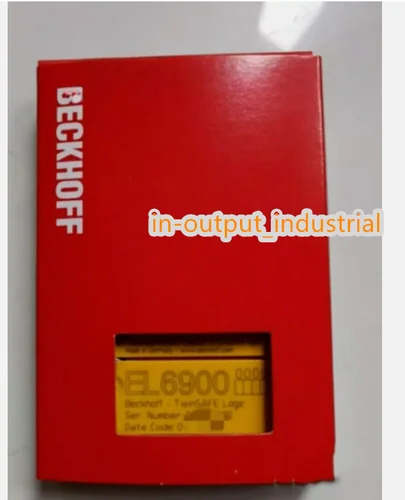ETH6900: Buterin's Meme Coin Dump and the Aftermath
Ethereum's Buterin Dumps Meme Coins: Genius Move or Risky Business?
Vitalik Buterin, co-founder of Ethereum, recently offloaded a batch of meme tokens, netting 257.1 ETH (around $636,000). Lookonchain data confirms the sales, which included MSTR, POPCAT, ITO, ETH6900, SATO, and MILO. This isn’t a new phenomenon; Buterin has a history of selling or donating unsolicited tokens sent to his wallet. But this time, the move sparks a renewed debate: Is Buterin simply managing his digital assets responsibly, or is his involvement—even passively—with meme coins creating unnecessary market volatility? Vitalik Buterin Sells Meme Tokens for 257 ETH
A Calculated Dump or an Unintentional Endorsement?
The core issue isn't just the sale itself; it's the potential impact of Buterin's actions on the broader crypto market. When Buterin acknowledges a meme coin (even with a simple "thank you"), it can send prices skyrocketing. Remember the EBULL token? Crypto personality Rug Muncher highlighted its price spike following Buterin's recognition. This creates an opportunity for early investors (often insiders) to dump their holdings on later entrants, leaving retail investors holding the bag.
Buterin's defenders argue that he's merely disposing of unwanted tokens, a digital version of cleaning out your spam folder. He didn't ask for these coins, and he's under no obligation to hold them indefinitely. Plus, it's possible, even probable, that he'll donate a portion of the proceeds to charity, as he's done in the past. (Recall his donation of MOODENG proceeds to anti-airborne disease technology research.) But does the intent matter if the outcome is the same: pumped-and-dumped meme coins and burned investors?
The data is clear: Buterin sold 330,000 MSTR for 114.1 ETH ($282,000), 14 million POPCAT for 74.99 ETH ($186,000), and so on. These aren't insignificant sums. And while $636,000 is a rounding error in the grand scheme of Ethereum, it's real money for the average crypto investor. The question is, does Buterin bear any responsibility for the consequences, intended or otherwise?
The Transparency Paradox
The problem is a lack of transparency, not just in meme coins themselves, but also in the motivations behind Buterin’s actions. We know what he did – the on-chain data is irrefutable. We even have a vague idea why – his stated policy of dealing with unsolicited tokens. But we don’t know how he decides which tokens to acknowledge, which to sell, and which to donate. This lack of clarity creates room for speculation and, potentially, manipulation.

I've looked at hundreds of these blockchain transactions, and this pattern of unsolicited tokens being dumped is not unique to Buterin. What is unique is the outsized influence he wields. His every move is scrutinized, amplified, and often misinterpreted. The market treats his wallet like a crystal ball, trying to divine his future intentions. Maybe that's unfair, but it's the reality.
It's worth noting that economist Tyler Cowen even suggested awarding Buterin a Nobel Prize. While that's a testament to Buterin's contributions to the field, it also underscores the weight of his position. Nobel laureates are held to a higher standard; should crypto pioneers be any different?
Buterin's Wallet: A Canary in the Coal Mine?
Ultimately, Buterin's meme coin dump isn't just about one person's transactions. It's a symptom of a larger problem: the inherent risks and lack of regulation in the meme coin market. These coins thrive on hype, speculation, and often, outright scams. The fact that Buterin, one of the most respected figures in crypto, is caught in this web highlights the need for greater caution and due diligence.
The data suggests that Buterin's actions, while perhaps well-intentioned, have unintended consequences. The solution isn't to demonize Buterin, but to address the underlying issues that make meme coins so susceptible to manipulation. More transparency, stricter regulations, and increased investor education are crucial to protecting the average crypto user.
The Unintended Pump: A Cautionary Tale
-

Social Security's 2026 COLA: What the Projections Show So Far
EveryOctober,afamiliarritualp...
-

Warren Buffett's OXY Stock Play: The Latest Drama, Buffett's Angle, and Why You Shouldn't Believe the Hype
Solet'sgetthisstraight.Occide...
-

The Great Up-Leveling: What's Happening Now and How We Step Up
Haveyoueverfeltlikeyou'redri...
-

The Business of Plasma Donation: How the Process Works and Who the Key Players Are
Theterm"plasma"suffersfromas...
-

The Future of Auto Parts: How to Find Any Part Instantly and What Comes Next
Walkintoany`autoparts`store—a...
- Search
- Recently Published
-
- XRP Price: Current Performance & Future Projections
- SRL: Meaning, Fall Protection, and the Blockchain Angle
- Martech News: AI, Data, and What It All Means
- Energy's Next Act: What Is It and Why Now?
- Cross-Border Craze: What's the Definition and the Global Impact?
- ETH6900: Buterin's Meme Coin Dump and the Aftermath
- Huawei's Comeback: Phones, News, and a Bold Vision for the Future
- Ethereum's Price and BlackRock's Grip: What We Know
- Vietnam War: What Happened, When, and Why We Still Care
- The Industry: AI's Booming – What Does It All Mean?
- Tag list
-
- carbon trading (2)
- Blockchain (11)
- Decentralization (5)
- Smart Contracts (4)
- Cryptocurrency (26)
- DeFi (5)
- Bitcoin (29)
- Trump (5)
- Ethereum (8)
- Pudgy Penguins (5)
- NFT (5)
- Solana (5)
- cryptocurrency (6)
- XRP (3)
- Airdrop (3)
- MicroStrategy (3)
- Stablecoin (3)
- Digital Assets (3)
- PENGU (3)
- Plasma (5)
- Zcash (5)
- Aster (4)
- investment advisor (4)
- crypto exchange binance (3)
- SX Network (3)
